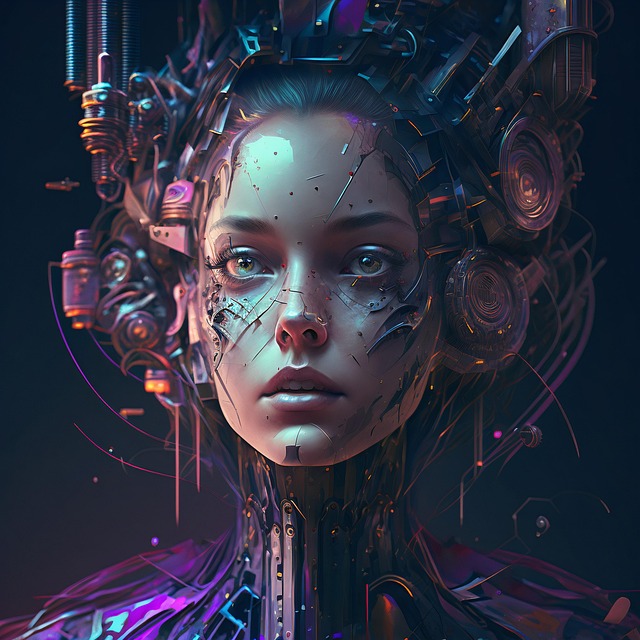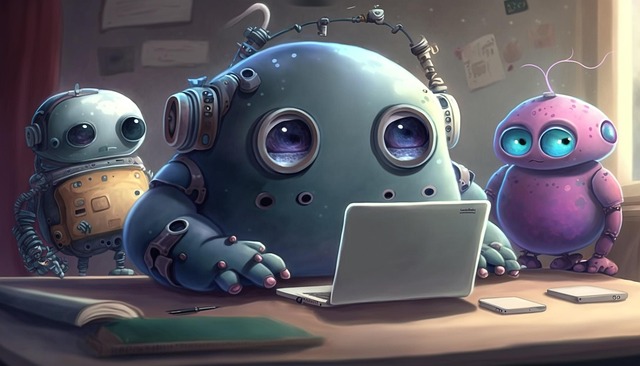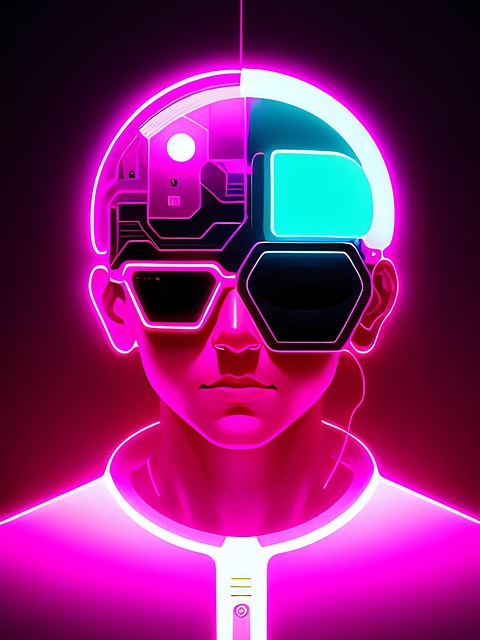ChatGPT, despite powerful text generation, faces challenges with data bias, knowledge cutoff, lack of real-world context, and limited fact-checking. It struggles with complex reasoning, original creativity, and specialized topics like calculus and ethics. Users should exercise caution in relying on ChatGPT for up-to-date information and be aware of its limitations, especially in dynamic fields. Ethical concerns include misinformation, copyright issues, bias reinforcement, and privacy worries. Developers must prioritize transparency, security, and user education to mitigate these risks.
“ChatGPT, an advanced language model developed by OpenAI, has captivated users worldwide with its human-like conversational abilities. However, despite its impressive capabilities, ChatGPT possesses several limitations that are essential to understand. This article explores key constraints, including data bias and training limitations, lack of real-world context, inability to verify information, limited creativity, struggles with complex reasoning, and ethical concerns regarding privacy risks. By addressing these aspects, we gain a nuanced perspective on the current state and future potential of ChatGPT.”
- Data Bias and Training Limitations
- Lack of Real-World Context
- Inability to Verify Information
- Limited Creativity and Originality
- Struggles with Complex Reasoning
- Ethical Concerns and Privacy Risks
Data Bias and Training Limitations

ChatGPT, despite its remarkable capabilities, is not without limitations. One significant challenge lies in the realm of data bias and training constraints. The model’s responses are directly influenced by the data it has been trained on. If the training data contains biases or inaccuracies, these can inadvertently be reflected in the AI’s output. For instance, if the training corpus includes gender or racial stereotypes prevalent in older texts, ChatGPT might perpetuate these biases in its answers, which raises concerns about ethical implications and the need for diverse and carefully curated datasets.
Additionally, the model’s knowledge cutoff is a critical factor. ChatGPT’s understanding is limited to the information available up until the time of its training. This means it may not have access to the latest events, discoveries, or advancements in various fields. For specialized topics like calculus, where concepts evolve and new theories emerge, the model might struggle to provide the most current insights. While users can guide ChatGPT with specific prompts, a comprehensive bibliography formatting rules guide or an overview of calculus concepts won’t be within its dynamic range unless updated regularly. Consequently, users should exercise caution when relying on the AI for information on rapidly changing subjects and consider visiting us at art history movements overview anytime for a broader perspective.
Lack of Real-World Context

One significant limitation of ChatGPT is its lack of real-world context and current events knowledge. Trained on a vast dataset, this AI model may provide accurate information based on that data, but it struggles to adapt to new, unforeseen circumstances. For instance, while ChatGPT can offer detailed explanations of poetic devices, it might not immediately grasp the cultural nuances or social sensitivities behind contemporary poetry or literature. This disconnect from real-world trends and developments is a critical gap, especially in fields where context is key, such as journalism, policy discussions, or even creative writing that aims to reflect modern experiences.
To bridge this gap, users often need to provide additional context or guide the conversation towards relevant topics. Moreover, while ChatGPT excels at generating text based on prompts, it lacks the ability to independently gather and interpret real-time data from reliable sources. This limits its potential use in tasks that require up-to-date information, such as market analysis or news summarization. As a result, users interested in leveraging AI for specific applications, like data analysis tools introduction, should be aware of these limitations and consider them when evaluating the model’s output. Visit us at data analysis tools introduction anytime to explore how technology can complement human expertise beyond text generation.
Inability to Verify Information

One significant limitation of ChatGPT is its inability to verify the accuracy of information it provides. As an AI language model, ChatGPT generates responses based on patterns and data it has been trained on, but it does not have access to real-time facts or the ability to cross-reference its answers against reliable external sources. This means that while ChatGPT can offer insights and creative writing prompts, it may not always be suitable for providing definitive information, especially on topics requiring specific knowledge like mathematical problem-solving approaches. Users relying solely on ChatGPT for critical decisions or research should exercise caution and verify the details through other credible resources.
Furthermore, the model’s responses are generated through algorithmic thinking exercises, which can sometimes lead to incorrect or nonsensical answers, especially when dealing with complex queries that demand a deeper understanding of concepts. Unlike traditional search engines that index and rank web pages, ChatGPT operates within its own trained framework, leaving room for inaccuracies or biases present in the data it was trained on. Therefore, users should treat ChatGPT’s outputs as suggestions or starting points for further exploration rather than definitive answers, especially when tackling specialized subjects or requiring precise learning styles tailored to individual needs.
Limited Creativity and Originality

Despite its impressive capabilities, ChatGPT has limitations when it comes to creativity and originality. While it can generate text that appears innovative and unique, much of its output relies on patterns learned from vast datasets. This means ChatGPT often produces content that is derivative or based on existing ideas rather than truly original. It struggles to come up with groundbreaking concepts or creative solutions that push boundaries, especially in fields requiring artistic expression or imaginative thinking like literature, music, or visual arts.
One way to enhance the creativity of AI models like ChatGPT is through blended learning approaches that combine machine learning with human input. By incorporating diverse learning styles and allowing for feedback loops, these models can learn to generate more diverse and original content. For instance, providing science experiment ideas or creative prompts could encourage ChatGPT to explore uncharted territories, fostering a more dynamic interaction between AI and human users. To unlock the full potential of these tools, consider giving us a call at essay writing tips for tailored guidance on leveraging their capabilities effectively while acknowledging their limitations.
Struggles with Complex Reasoning

Despite its impressive capabilities, ChatGPT struggles with complex reasoning tasks that require deep philosophical ethics discussions. While it excels at generating text based on patterns learned from vast amounts of data, it often falls short when faced with abstract concepts or nuanced interpretations. This limitation becomes particularly evident in areas like philosophy, where arguments and theories demand a level of critical thinking and logical analysis beyond the scope of its current training.
Furthermore, ChatGPT’s effectiveness varies across different learning styles and personalized education paths. What works for one learner might not be as impactful for another, as it relies heavily on the input provided and the context understood from the data it was trained on. Exploring various learning styles and tailoring educational approaches to individual needs can help overcome these limitations, encouraging users to consider the tool as a supplement rather than a replacement for traditional teaching methods. Visit us at coding tutorials for beginners anytime to learn more about leveraging technology in education.
Ethical Concerns and Privacy Risks

The rapid rise of AI models like ChatGPT has sparked both excitement and concern among users. One area of significant debate is the ethical implications and privacy risks associated with this technology. As ChatGPT generates content based on vast amounts of data, there are valid worries about the potential for misinformation, copyright infringement, and the reinforcement of existing biases present in its training material. The accessibility and ease of use could also lead to a lack of critical thinking as users may rely too heavily on AI-generated responses without verification.
Moreover, privacy becomes a pressing issue when ChatGPT processes user inputs and generates personalized outputs. The collection, storage, and potential misuse of personal data raise red flags, especially concerning young users and sensitive discussions. Art history movements overview, for instance, could be influenced by biased algorithms, impacting academic discourse. To mitigate these risks, developers must prioritize transparency, implement robust security measures, and educate users about responsible AI interaction. Visit us at critical thinking exercises anytime to explore more on navigating these challenges in the age of AI.
While ChatGPT has demonstrated remarkable capabilities, it’s crucial to acknowledge its limitations. From data bias and lack of real-world context to ethical concerns and struggles with complex reasoning, these constraints highlight the need for responsible use and ongoing development. As we navigate this exciting new era of AI, understanding ChatGPT’s weaknesses is as important as recognizing its strengths, ensuring we harness its potential while mitigating its risks.





Leave a Reply